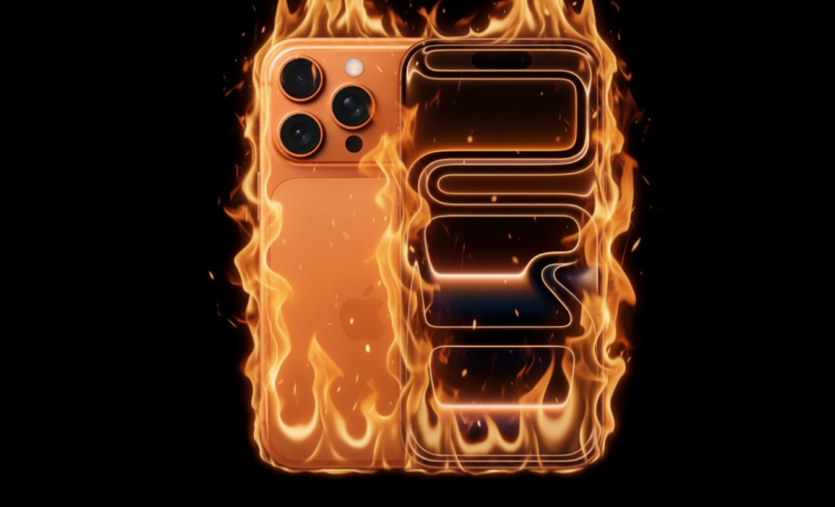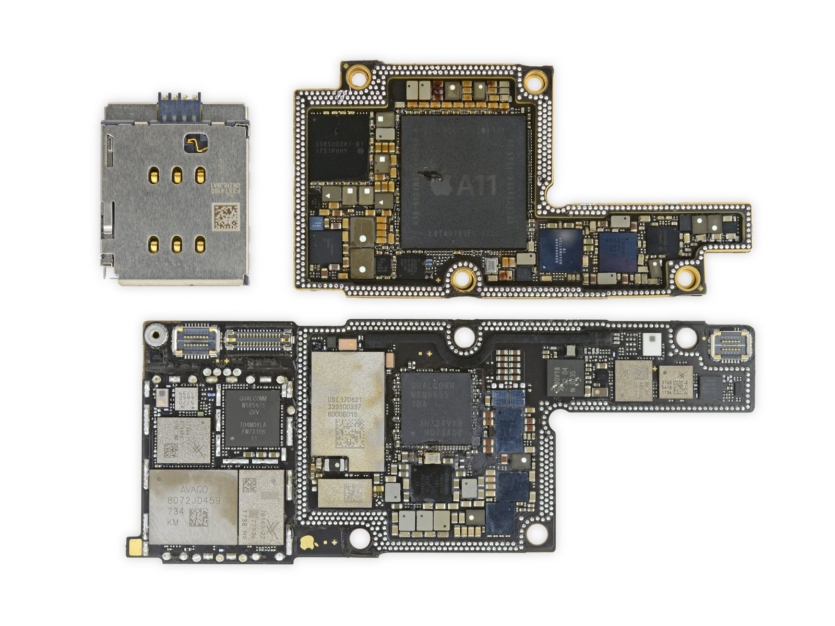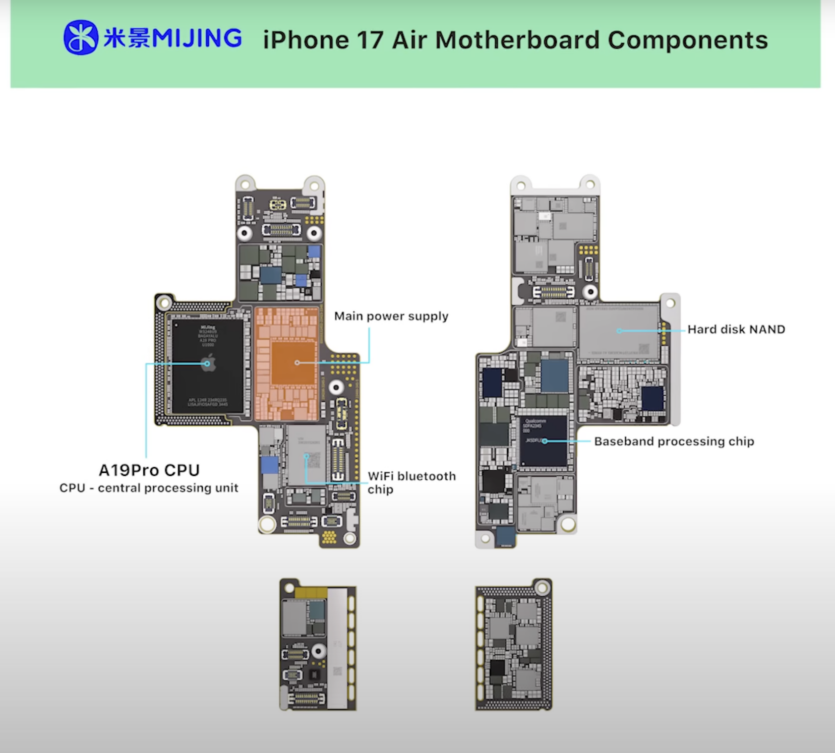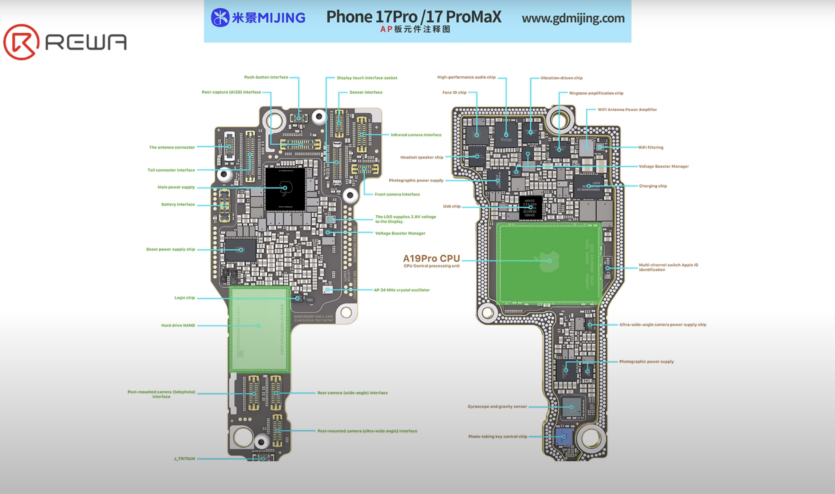
Every year, manufacturers such as Apple, Qualcomm, and Samsung delight potential buyers with more and more powerful processors. Performance and potential tasks should be performed faster and faster. Games should not “slow down” and constantly maintain a stable 60 or more fps. However, as a result, we get our favorite devices that start to slow down over time. In this article, we’ll talk about the causes and solutions using the example of the new Apple iPhone 17 Pro and iPhone Air.
Content
Overheating — cause of performance degradation
When playing games or doing other heavy tasks, smartphones start to heat up. This is absolutely natural: internal components heat up the main body. But sooner or later, the chips reach a certain temperature limit, after which they begin to reduce their clock speed. This leads to a decrease in the performance of these chips. Among computer enthusiasts, this decrease is called Throttling.
The chip software has a predefined temperature limit (100-110 degrees Celsius). Is it better to have a slow live chip than no chip at all after 30 minutes of operation?
Trolling is influenced by many things. One of them is the external environment. For example, if you start PUBG while sitting in 40-degree heat, the frequency reset will start from the very first minute (if not earlier). Gradually, it will become more and more difficult for the smartphone to process information from the game. Sooner or later, the game on the device will simply stop working (freeze) and close. The operating system is also in trouble because it runs in the background.
The most important factor to counteract trotting is to ensure that the internal components of devices are cooled. Returning to our example above, let’s remove the heat. Now there are only two heating zones: our fingers/palm (not included) and the device with the game turned on, which heats up from the inside. It is the “sun inside” that generates heat. Let’s take a look at the cooling methods from smartphone manufacturers.
Built-in small coolers, as in the Nubia Red Magic 10S Pro we will not consider it. The only thing missing was the noise from the phone and the loss of protection from water and sand.
Using the housing for heat dissipation
We can safely assume that the case is part of the cooling system, since it is the one that transfers heat to the external environment. The choice of material is important, which is why we have to turn to physics. Let’s take a look at the thermal conductivity table below. A few years ago, graphene was used in smartphones, but only as a separate heat dissipation element under the display and battery.
We have never seen a single graphene case. The use of diamond or gold is not appropriate due to its high cost. Copper can be seen in many cooling systems in computers, set-top boxes, etc. In mobile devices, it is usually used in evaporation chambers (more on them below).
| Material | Thermal conductivity, W/(m*K) |
| Graphene | 4840+ |
| Diamond | 1000+ |
| Copper | 390 |
| Gold | 320 |
| Aluminum | 236 |
| Titanium | 15 |
| Iron | 43+ |
| Glass | 1 |
| Air | 0,026 |
Titanium, iron and glass are poorly suited. As a result, there is no particular choice — aluminum not only offers good thermal conductivity results, but is also not very expensive to produce.
Cooling thanks to the Vapor Chamber
New processors are becoming more powerful and hotter than those released more than five years ago. Using an aluminum case alone doesn’t help solve the problem. The classic cooling method used in almost all computer systems (PCs, laptops, game consoles) is heat pipes. However, it’s unlikely that you’ll be able to fit them into a smartphone case without significantly increasing their weight and size.
For this reason, mobile phones use so-called “Vapor Chamber“, which are also currently used for high-performance graphics cards. They consist of a small cavity with copper walls, channels, and a small amount of liquid. How the camera works:
- The heat from the source is transferred to the evaporation chamber area;
- The liquid inside gradually begins to evaporate, expand, and condense. The heat is transferred to the colder part of the chamber and the radiator;
- The gaseous liquid returns to the liquid state through special small channels;
- The process is completely repeated again until the liquid no longer interacts with heat.
According to the video, evaporation chambers are less than 1 mm thick.
It is quite difficult to evaluate this solution. However, it definitely works for computer graphics cards. The only difference is that the volume of vapor chambers is very different between them and smartphones. And you shouldn’t be afraid of liquid leaks inside your smartphone — one or two drops are unlikely to leak out of the vacuum environment.
Motherboard design — the main cause of trottling
Mobile phones are quite small devices that require a lot of things to be inserted into them (display, charging connector, antennas, side keys). The other three components take up the most space inside: cameras, battery, and motherboard. Cameras can’t be made smaller (quality drops), and the battery is needed according to the principle “the bigger the better.” So, you have to sacrifice the size of the motherboard.



Layout of the iPhone X, iPhone 17 Pro, and iPhone Air
It’s hard to say who was the first to start reducing its size. The 2017 Apple iPhone X received a new two-layer type of board, now called a “sandwich”. Nothing bad should have happened, but Apple put the main A11 chip inside. There is simply nowhere to give off heat to the processor except for the textolite and the modem opposite it.
All these years, Apple has continued to put all its A1s inside. Even in the latest iPhone 17 Pro with A19 Pro, which was called the most powerful chip in history, it remained inside the “sandwich”. Let’s see if the situation has improved.
Android smartphones also use a sandwich motherboard and processors are located inside it. Coincidence or conspiracy?
Testing the iPhone 17 Pro and iPhone Air
With the release of the new Pro line of iPhones, Apple has returned to old and add somewhat new methods of fighting trolling:
- Returned to aluminum instead of titanium as the main body material — more heat is transferred to the environment;
- I significantly reduced the glass part. You can’t remove it, because you need to keep the MagSafe wireless charging support;
- Added a metal partition between the display and internal components — adds protection against drops or bending;
- For the first time, I added an evaporation chamber, which is located on the partition and covers the battery and NAND memory.
At first glance, we can see that there has been a lot of work done on the bugs. Should it be better? Yes, but not much. Let’s look at the table with the results of smartphones in 3DMark Wild Life Extreme Stress Test. It’s interesting that different publications/bloggers give us such different values that we have to insert several values for the same device. Absolutely all smartphones have poor results during the 20-minute test.
| Smartphone | Stability | Trotting (100 – Stability) |
| iPhone 17 Pro Max (Dave2D) | 81,5 % | 18,5 % |
| iPhone 17 Pro Max (Tom’s Guide) | 65,2 % | 34,8 % |
| iPhone 16 Pro Max (Tom’s Guide) | 54,7 % | 45,3 % |
| iPhone Air (Tom’s Guide) | 65,1 % | 34,9 % |
| iPhone 16e (GSMArena) | 63,7 % | 36,3 % |
| iPhone 15 | 71,4 % | 28,6 % |
| Google Pixel 10 Pro XL (GSMArena) | 59,2 % | 40,8 % |
| Samsung Galaxy Fold7 (GSMArena) | 55,5 % | 44,5 % |
| Samsung S25 Ultra (Tom’s Guide) | 49,3 % | 50,7 % |
| Samsung S25 Ultra (GSMArena) | 47,9 % | 52,1 % |
| OnePlus 13s (GSMArena) | 71,9 % | 28,1 % |
Let’s take another video, where we took the latest iPhone line and compared it in the ray tracing processing test 3DMark Solar Bay Stress Test. The results in the table show good results, but the improvement does not affect the “stability” of the Pro models. The difference between the 16 Pro Max and 17 Pro Max is within the margin of error. The iPhone Air with its thin body cools only 5.8% worse.
| Stability | Trotting (100 – Stability) | |
| iPhone 17 Pro Max | 67,4 % | 32,6 % |
| iPhone 16 Pro Max | 67,2 % | 32,8 % |
| iPhone 17 Pro | 61,4 % | 38,6 % |
| iPhone Air | 61,6 % | 38,4 % |
| iPhone 17 | 66,2 % | 33,8 % |
Who is interested in seeing the iPhone Air from the inside.
What to say in the Conclusion? Imagine that you have installed a CPU in your computer’s motherboard. You bought a “tower” with 10 copper heat sinks or expensive water cooling. What’s the point of them if they don’t fit the CPU’s contact cover? So we see an obvious problem and a clear solution that manufacturers are not implementing. Apple is no exception!

Spelling error report
The following text will be sent to our editors: